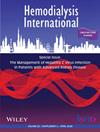Efficacy and safety of sucroferric oxyhydroxide versus sevelamer carbonate: A systematic review and meta-analysis
Abstract
Introduction
Phosphate binders are commonly used in patients receiving kidney replacement therapy (KRT), aiming to reduce and maintain serum phosphorus. Chronic kidney disease-mineral and bone disorder has been linked to reduced lifespan and worsened quality of life. This study aims to examine the efficacy and safety of sucroferric oxyhydroxide versus sevelamer carbonate in patients receiving KRT.
Methods
The data sources examined were MEDLINE (PubMed), Scopus, and the Cochrane Central Register of Controlled Clinical Trials with a search deadline of October 2023. We examined randomized controlled trials that compared sucroferric oxyhydroxide versus sevelamer carbonate in the adult population receiving KRT. We performed a meta-analysis combining the data from trials, using R-studio.
Findings
Inclusion criteria were met by five randomized trials. There was no statistically significant difference in the reduction of serum phosphorus between the two groups (MD: −0.07 mmol/L, 95% CI-random effects: −0.15 to 0.02). In the same line, a non-statistically significant difference was observed in serum i-PTH reduction between the two drugs (MD = −1.53 mg/dL, 95% CI = (−4.45, 1.4), p = 0.26, random effects model). No statistically significant difference was observed in all adverse events between the two groups (odds ratio: 1.11, 95% CI: 0.65–1.88, random effects model). Further analysis of gastrointestinal adverse events revealed that sevelamer carbonate increases gastrointestinal adverse events by up to 60% (odds ratio: 1.60, 95% CI: 1.31–1.97, common (fixed) effect model).
Discussion
This meta-analysis of randomized trials showed that both drugs, sucroferric oxyhydroxide and sevelamer equally and effectively controlled serum phosphorus levels, whereas sucroferric oxyhydroxide revealed a better profile in terms of gastrointestinal adverse events. Sucroferric oxyhydroxide is a valuable option for patients receiving KRT when sevelamer carbonate is more difficult to tolerate.


 求助内容:
求助内容: 应助结果提醒方式:
应助结果提醒方式:


